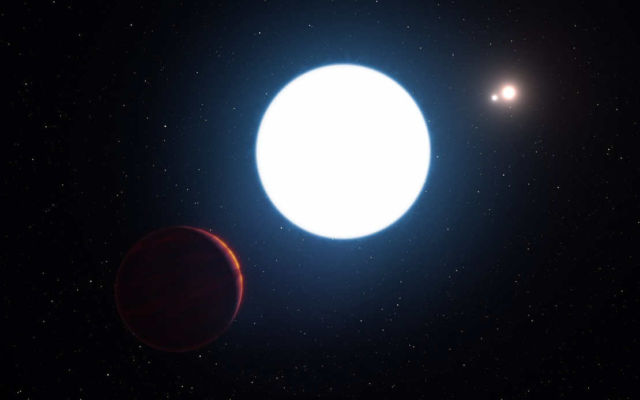Astronomers take images of the first exoplanet ever found in a wide orbit inside a triple-star system.
A team of astronomers have used the SPHERE instrument on ESO’s Very Large Telescope to image, to take the images.
The orbit of such a planet had been expected to be unstable, probably resulting in the planet being quickly ejected from the system. But somehow this one survives. This unexpected observation suggests that such systems may actually be more common than previously thought. The results will be published online in the journal Science on 7 July 2016.
Luke Skywalker‘s home planet, Tatooine, in the Star Wars saga, was a strange world with two suns in the sky. But astronomers have now found a planet in an even more exotic system, where an observer would either experience constant daylight or enjoy triple sunrises and sunsets each day, depending on the seasons, which last longer than human lifetimes.
Located about 320 light-years from Earth in the constellation of Centaurus (The Centaur). HD 131399Ab is about 16 million years old, making it also one of the youngest exoplanets discovered to date, and one of very few directly imaged planets. With a temperature of around 580 degrees Celsius and an estimated mass of four Jupiter masses, it is also one of the coldest and least massive directly-imaged exoplanets.
“HD 131399Ab is one of the few exoplanets that have been directly imaged, and it’s the first one in such an interesting dynamical configuration,” said Daniel Apai, from the University of Arizona, USA, and one of the co-authors of the new paper.
“For about half of the planet’s orbit, which lasts 550 Earth-years, three stars are visible in the sky; the fainter two are always much closer together, and change in apparent separation from the brightest star throughout the year,” adds Kevin Wagner, the paper’s first author and discoverer of HD 131399Ab.
Image Credit ESO/L. Calçada/M. Kornmesser
source ESO






Leave A Comment